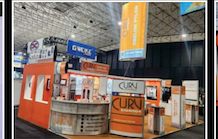MakerBot wants the performance 3D printer, Method, to make industrial-quality 3D printing more accessible. Method can produce parts with about a 0.2mm dimensional accuracy (or about 0.002mm per mm of travel, whichever is greater) that are repeatable and have vertical layer uniformity and cylindricity.
The printer features a dual performance extrusion system with a 19:1 gear ratio that provides up to three times the push force of a typical desktop 3D printer. It also features a longer thermal core than a standard desktop 3D printer to enable faster and smoother extrusion at higher movement speeds.
Nadav Goshen, MakerBot CEO said, ‘Current desktop 3D printers derive their DNA from hobbyist 3D printers and are insufficient for many applications in the professional segment. We believe that Method is the next step in helping organisations adopt 3D printing on a larger scale. Method provides a breakthrough in 3D printing that enables industrial designers and mechanical engineers to innovate faster and become more agile. It is built for professionals who need immediate access to a 3D printer that can deliver industrial performance to accelerate their design cycles.’
Method also has a circulating heated chamber that provides full active heat immersion for the duration of the print, allowing for temperature and quality control at every layer. MakerBot said this facilitates a controlled rate of cooling, allowing for higher dimensional accuracy as well as improved layer adhesion and part strength.
Method relies on a series of specialty-made materials provided by MakerBot for its performance. MakerBot’s line of precision materials come in three varieties: Tough, for printing high-strength, durable prototypes and fixtures with more impact strength than ABS; PLA, for early-stage development and conceptualisation applications; and a water-soluble PVA for printing supports that are easily removed without distorting or damaging the part.
MakerBot said it is also planning on rolling out a series of speciality materials for Method. The first of these is PETG, a polymer that is growing in popularity in 3D printing circles for its balance of flexibility and durability.















